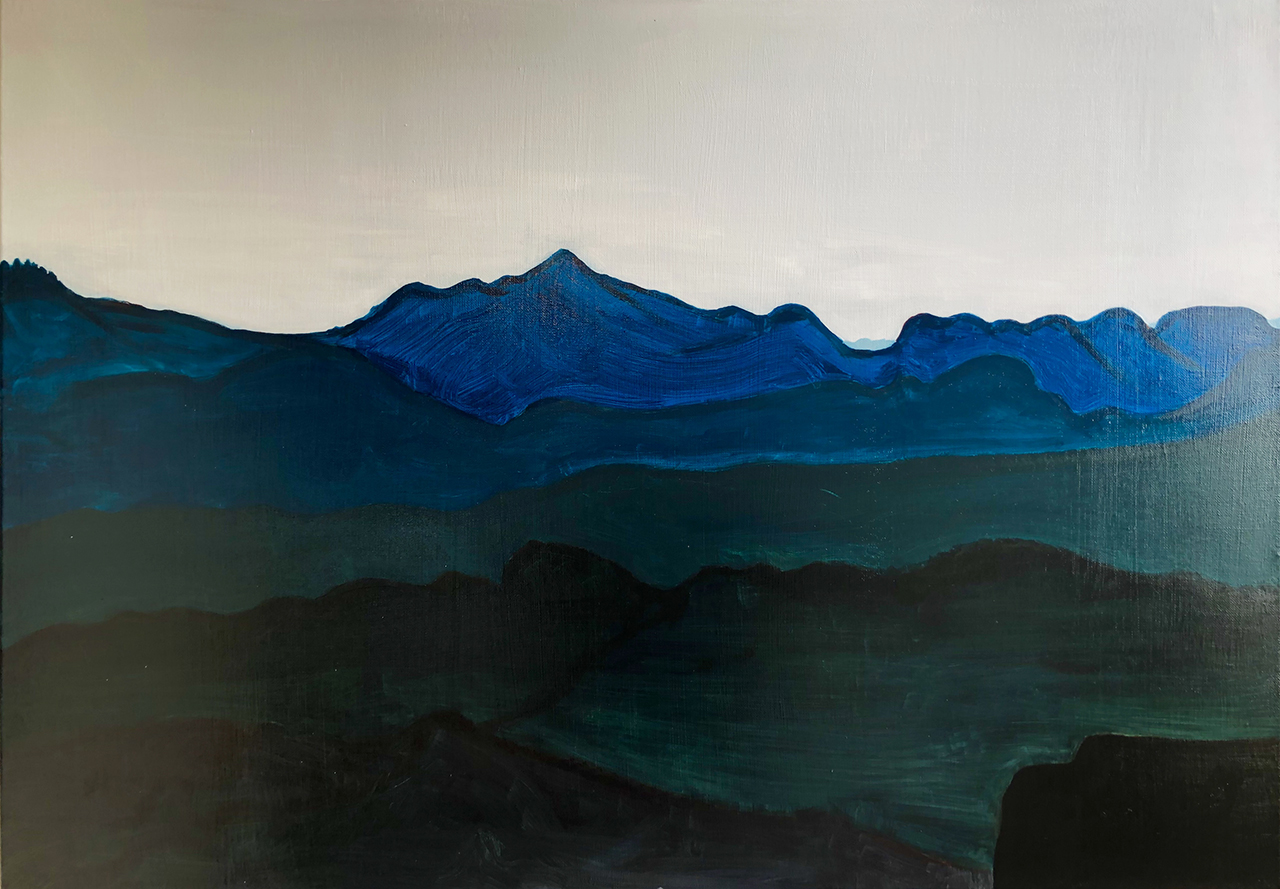A Passion for Nature
I have always loved the great outdoors – as a young boy playing in the bush around Middle Harbour Sydney, from my teenage years as a Boy Scout, to running Australia’s first bushwalking business – Blue Mountains Expeditions (B.M.E) – with my brother Ken in the late 1970’s. BME took small groups on one-, two- and four-day walks in the Blue Mountains west of Sydney, adventurous 7-day treks in South West Tasmania, cross-country ski tours in the Snowy Mountains, and even treks across the Kokoda Trail in New Guinea.
We were the first business of this type in Australia. Our motivation was to show people that Nature was a remarkable resource – close at hand and able to heal the soul and open the mind. This was our way, as young adults, of educating ‘city slickers’ and tourists on the need for environmental protection.

At Kokoda, end of the 9 day Kododa Trail walk, 1980. I’m the Guide wearing the Akubra hat!
Walking to Mount Hartz
Wherever we go today, a walking adventure is an essential ingredient of our travel experience. So it was only natural that when we stayed for seven weeks in Blackman’s Bay south of Hobart Tasmania at the end of 2018 walking was a feature. On one occasion I organised to go on a five-hour walk to the 1,253-metre summit of Mt. Hartz with dear friend Anna Freeland-Hopwood. The Hartz Mountain National Park is accessible by car via Geeveston and borders Tasmania’s massive 600,000-hectare Southwest National Park, one of Australia’s most remote and rugged wilderness areas.
The view from Mt Hartz summit across this World Heritage area was remarkable, sweeping vistas that took in significant mountainous landmarks such as the Arthur Range, Frankland Range, Federation Peak and Frenchman’s Cap.

I’m on the summit of Mt. Hartz, December 2018
Here the weather changes are dramatic. The area is renowned for its adverse and often inhospitable conditions throughout the year. Annual rainfall averages 2,000 millimetres with very strong cyclonic winds, low temperatures and frequent cloud cover. However we were lucky to not have rain, though the wind did pick up significantly as we neared the summit.
As we walked higher I was enthralled by the profusion of alpine shrubs and flowers growing between the rocky outcrops – sky gardens! We spotted several Wedge-tail eagles soaring on the thermals. On the summit we huddled from the wind and looked over this amazing domain. I could not help but think: "what a painting this would make!" It was far too windy to sit and sketch, and thus I spent the time gaining lots of photographic reference.
The Drawing
Back in our rented Blackman’s Bay house my first task was to draw the scene, and understand fully the subject matter. Using charcoal, one of my favourite mediums, I set about drawing a detailed and realistic representation of the awe-inspiring vista toward Frenchman’s Cap from the summit of Mt. Hartz.

Looking toward Frenchman’s Cap, 2018, charcoal on paper, 29.7 x 42 cm.
The Painting
I was convinced that the work required poetic licence – I included a sky garden in the scene, a feature that in reality had been situated 100 metres below our position on the mountain’s summit. I also exaggerated the height of distant Frenchman’s Cap to give a more dramatic appeal to the painting and knew from the outset that the cloud formations would require real drama. Of course a Wedgetail eagle also had to be a feature of the work.
The painting is based on a series of layers that recede into the distance; each layer softer and less defined. After applying multiple gesso to the canvas, my next task was to draw up the painting, and then to lay down the base colour for each of these five layers of mountainous terrain. The dramatic sky was added once the work on the mountains had been fully completed. It is this dramatic sky, with its dragon-shaped clouds, that gives the painting its name. The series of images below quickly illustrates the process.

Process 1: drawing up the 100 x 72 cm. canvas

Process 2: Blocking in the dark base colours of the five separate layers, whilst keeping the sky blank.

Process 3: Starting to populate the mid- and foregrounds with rocky features.

Process 4: painting there ‘sky garden’ and mid-ground forest detail.

Process 5: Adding the dramatic, surreal sky that gives the painting its name.


An example of the extreme detail in the fore and mid-ground of the painting.
The painting was started in December 2018 when I spent an initial month working periodically on the canvas between our various Tasmanian sojourns. However time ran out, and after returning to Sydney, the painting was stored away awaiting my return from our 16-month trip away in Indo-China and Europe. We returned from overseas in April 2020, during the start of the Covid-19 Pandemic, and enjoyed compulsory hotel quarantine. Once out of incarceration I returned to the canvas, with May and June 2020 needed to complete the project.
See Where Dragons Play – I hope you enjoy!
